
Activity Reports
High school students from Tochigi participate in volunteer activities
September 20, 2011
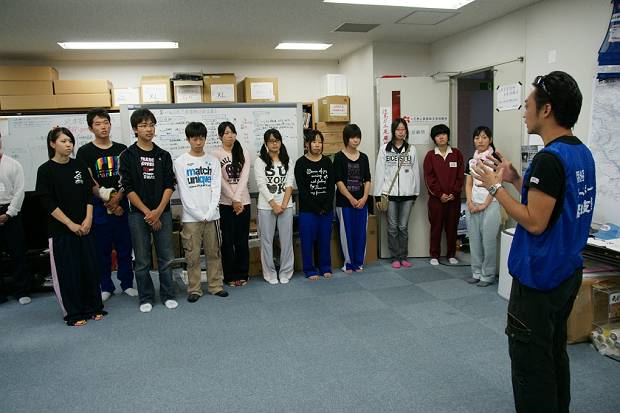
A group of high school students from Tochigi who participated in volunteer activities.
On September 11, 6 months after the Great East Japan Earthquake and tsunami caused unprecedented damage, 10 high school students from Tochigi Prefecture came to help with Peace Boat’s debris removing volunteer activities.
The students arrived at Ishinomaki Senshu University by bus at 9am. They started by receiving an explanation about the damage conditions whilst examining a map of Ishinomaki city.
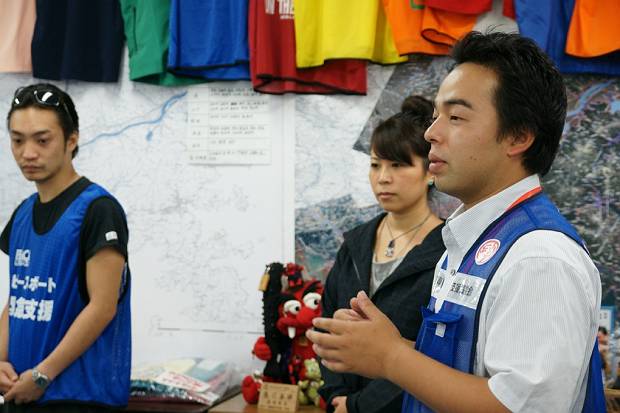
Mr. Daimaru from the Ishinomaki Disaster Recovery Assistance Council Inc. (IDRAC) came to greet the students.
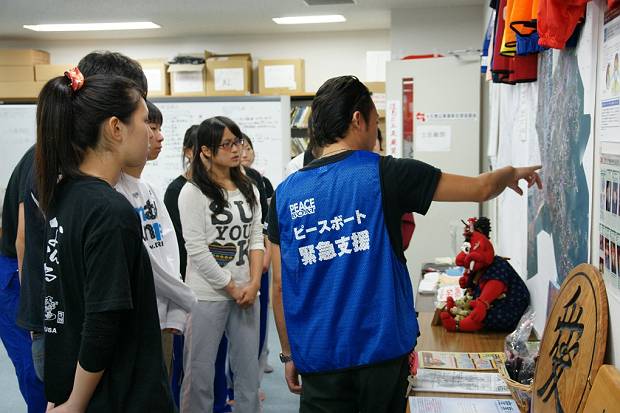
Here are the students listening to the explanation about current conditions by Peace Boat staff member Kobayashi Shingo.
After the explanation, the students got straight onto a bus to head towards the Kobuchihama region on the Oshika Peninsula where they would be working. They could only be in the area for a limited time so they wanted to help as much as they could.
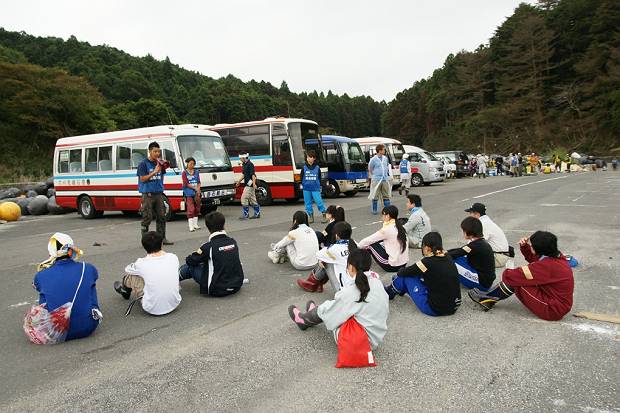
The students are nervous as they listen to an explanation on-site as it is their first time to participate in something like this.
The area is a little over an hour outside of Ishinomaki city. After arriving in Kobuchihama, the students prepared by changing into work clothes and listening to an explanation and words of caution about the work by one of the people in charge of the area.
The students started off by doing “Radio exercises” (warm-up exercises that are done to music on the radio) to loosen up their muscles before working so that they wouldn’t injure themselves. Radio exercises are known by most Japanese people but one of the students got the movements mixed up and everyone relaxed as they laughed about this together.

Warm-up exercises are important to prevent injury.
Then it was time for the students to start working.

Other volunteers had already commenced work.
Here are some pictures to show the work that was being done.

The debris is divided into two categories as it is collected – debris that has been scattered around, and fishing equipment.
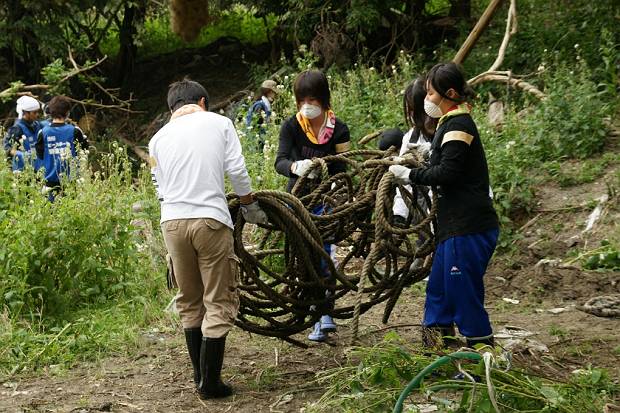
Amongst the debris are thick ropes like this one that need several people to carry them.
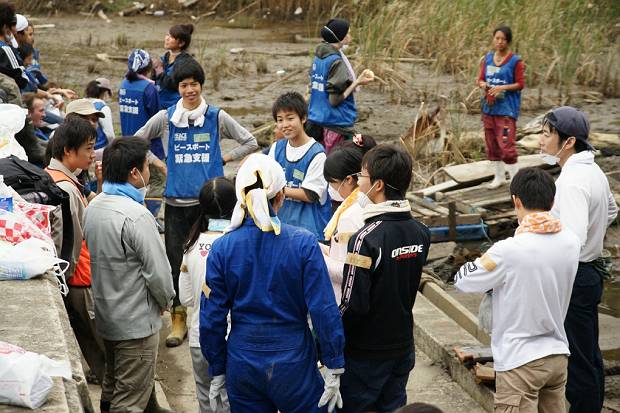
Break time. The other volunteers talk to the high school students about how they got involved in volunteering.

Each type of debris is taken to a interim collection point once a certain amount has been collected.
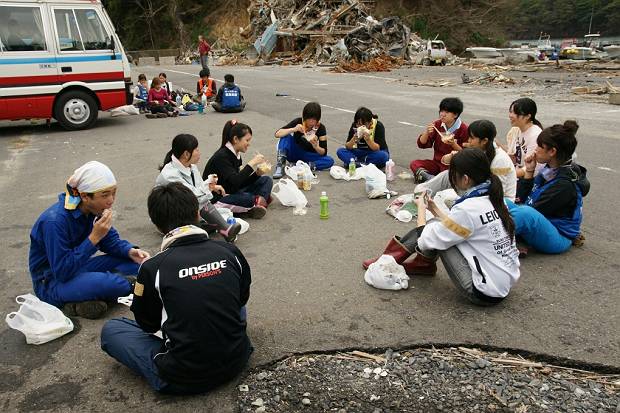
Lunch time. The students are hungry after working hard. During this time I talked to some of the students about how they felt after the morning’s work and about their impressions after coming to the disaster-affected area for the first time.
Some of the comments were as follows:
“I was speechless when I saw the damage.”
“I had been thinking about coming here and volunteering for a long time so I am glad I was able to come.”
“I thought that after so much damage, that all of the debris would have to be thrown away. I was surprised when I learned that some of the stuff collected such as fishing equipment might be able to be used again.”
“I experienced so many things today. I feel like I need some time to think about everything otherwise my head might explode.”
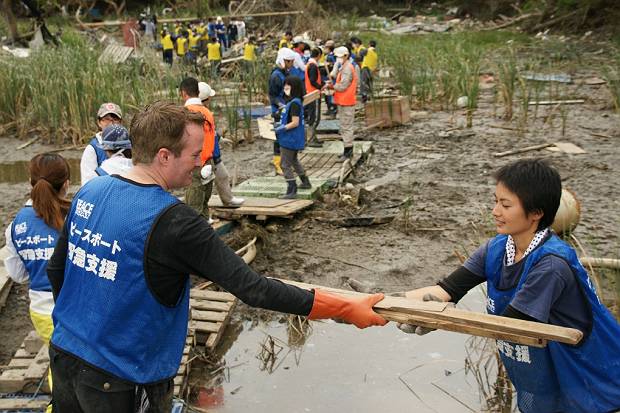
In the afternoon everyone formed a human chain to move the debris to the collection area where the fishermen collect everything from.
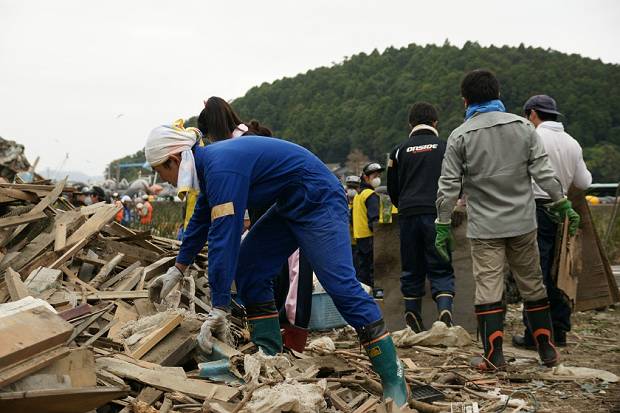
The students spread out and joined the chain.
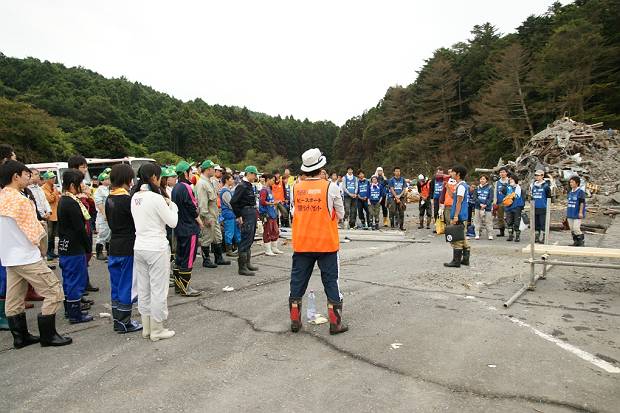
Work for the day finished at 2.30pm due to the rising tide. There were no injuries during the day.
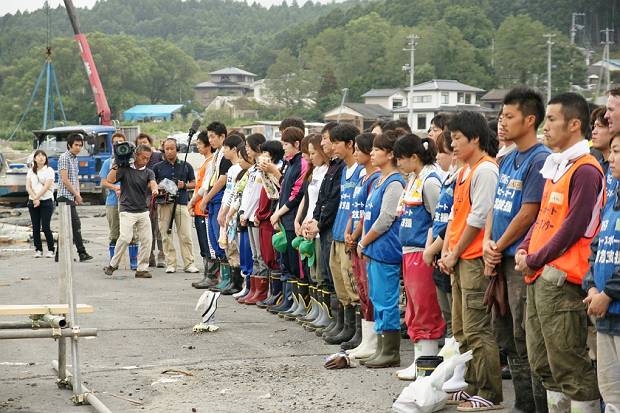
After finishing work, a minute of silence was held in honor of those who lost their lives at the time of 2.46pm, which is when the disaster struck six months earlier.
The volunteers stood in a long line facing the ocean to offer their prayers.
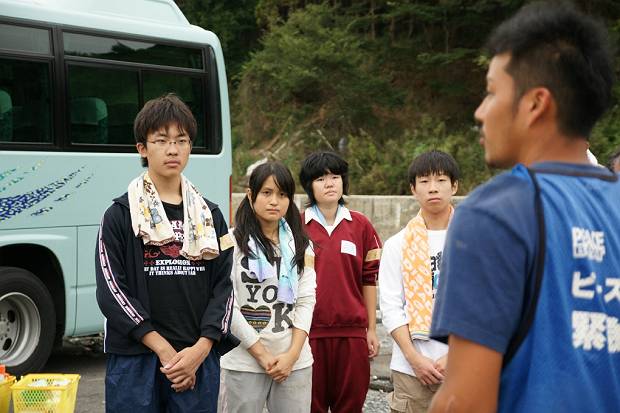
This is the on-site leader expressing appreciation to the students for coming to volunteer.
The students came to help volunteer on the day marking six months since the Great East Japan Earthquake and tsunami occurred on March 11. One of the students said, “I am sure that I will happily remember this day one day when I eat fish that are caught in Miyagi. That’s what I am looking forward to!”
We hope that the students tell their family and friends from school about their experiences after returning home and that these experiences become something that they will benefit from in the future.
All photos by Nakamura Mitsutoshi



